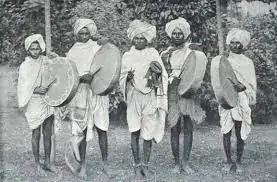
Madiga Dandora: A Fight for Equitable Reservations in Andhra Pradesh and Telangana
The Madiga Dandora movement stands as a landmark struggle for equitable reservation benefits within the Scheduled Caste (SC) community in India. It emerged in the early 1990s under the leadership of the Madiga Reservation Porata Samithi (MRPS), an organization advocating for the rights of the Madiga caste, one of the largest SC groups in Andhra Pradesh and Telangana.
Why:
The Madiga Dandora movement arose from a growing disparity in access to educational and employment opportunities within the SC category. While reservations were allocated for SCs as a whole, some sub-castes historically enjoyed greater access to these benefits compared to others. The Madiga community, despite their large population, felt they weren’t receiving a fair share of the reserved opportunities. This disparity fueled the movement’s demand for categorization of SC reservations.
When and Where:
The movement gained momentum in the mid-1990s, primarily concentrated in Andhra Pradesh (now split into Andhra Pradesh and Telangana). Large-scale protests, rallies, and marches took place across the state, particularly in areas with a high Madiga population. The iconic “Dandora,” a traditional leather drum symbolizing communication and community gathering, became a potent symbol of the movement.
Historical Context:
The Madiga Dandora movement built upon earlier struggles for Dalit rights in India. The movement’s founder, Manda Krishna Madiga, had previously been involved in anti-caste activism. The Dandora movement specifically focused on the issue of reservation allocation within the SC category, drawing attention to the unique challenges faced by the Madiga community.
Strategies:
The MRPS employed various strategies to achieve its goals:
- Mass Mobilizations: Large-scale rallies, demonstrations, and marches, including a notable 1052 km “Maha Padayatra” (foot march) from the then Chief Minister’s village to Hyderabad.
- Public Awareness Campaigns: Educational efforts aimed at informing the public and policymakers about the rationale behind reservation categorization.
- Legal Advocacy: The MRPS pursued legal avenues to push for government action on reservation categorization.
Impact and Legacy:
While the fight for reservation categorization continues, the Madiga Dandora movement undoubtedly left a significant mark. It played a crucial role in:
- Highlighting the disparities within the SC category.
- Sparking a national conversation about reservation reforms.
- Empowering the Madiga community and inspiring other Dalit groups to fight for their rights.

